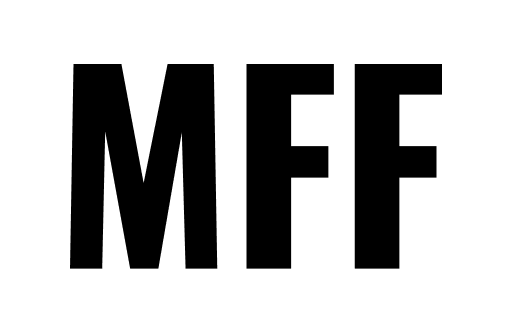Who are the Buyers?
Here is the consolidated list of sculpture buyers at major auction houses (Christie’s, Sotheby’s, Phillips, Bonhams, Artcurial, Dorotheum) from 2022 to 2025
Christie’s
- Buyer: Gagosian Gallery — Artwork: Balloon Dog (Orange) by Jeff Koons — Price: $15,200,000 — Location: New York — Year: 2023
- Buyer: Private European Collector — Artwork: Grande Femme II by Alberto Giacometti — Price: $28,000,000 — Location: London — Year: 2022
- Buyer: Anonymous Bidder — Artwork: Spider IV by Louise Bourgeois — Price: $12,300,000 — Location: New York — Year: 2024
Sotheby’s
- Buyer: Hauser & Wirth — Artwork: Untitled (Lamp/Bear) by Urs Fischer — Price: $8,200,000 — Location: New York — Year: 2022
- Buyer: Private Asian Collector — Artwork: Figure by Henry Moore — Price: $9,500,000 — Location: London — Year: 2023
- Buyer: Anonymous — Artwork: Rabbit by Jeff Koons — Price: $11,800,000 — Location: New York — Year: 2025
Phillips
- Buyer: David Zwirner Gallery — Artwork: Cavemanman by Thomas Hirschhorn — Price: $2,400,000 — Location: London — Year: 2023
- Buyer: Private Middle Eastern Collector — Artwork: Untitled Sculpture by Anish Kapoor — Price: $3,100,000 — Location: New York — Year: 2024
Bonhams
- Buyer: Opera Gallery — Artwork: Sheep Piece by Henry Moore — Price: $1,850,000 — Location: London — Year: 2022
- Buyer: Private U.S. Collector — Artwork: Reclining Figure by Lynn Chadwick — Price: $2,200,000 — Location: New York — Year: 2023
Artcurial
- Buyer: Perrotin Gallery — Artwork: Standing Figure by Jaume Plensa — Price: €950,000 — Location: Paris — Year: 2024
- Buyer: Private French Collector — Artwork: Totem by Niki de Saint Phalle — Price: €1,400,000 — Location: Paris — Year: 2023
Dorotheum
- Buyer: Thaddaeus Ropac Gallery — Artwork: Bronze Head by Tony Cragg — Price: €780,000 — Location: Vienna — Year: 2022
- Buyer: Private German Collector — Artwork: Abstract Form by Fritz Wotruba — Price: €620,000 — Location: Vienna — Year: 2023
The Sale of High-Value Sculptures as a Means of Preserving Capital in Recent Years
In recent years, the art market has demonstrated its resilience as a safe haven for wealth preservation, particularly in times of economic instability, inflation, or political uncertainty. Among various art forms, the sale of high-value sculptures has emerged as a noteworthy strategy for individuals and institutions seeking to safeguard and diversify their capital. Unlike more volatile financial instruments, masterpieces of sculpture—often unique, monumental, and tied to cultural heritage—carry both material and symbolic value that transcends short-term market fluctuations.
One of the key reasons why sculptures have become attractive assets lies in their tangible and enduring nature. Unlike digital assets or equities, a physical sculpture cannot be erased by market crashes or technological failures. Its value is closely connected to the reputation of the artist, the rarity of the piece, and its cultural significance. Collectors and investors recognize that a renowned sculpture not only appreciates in financial terms but also secures prestige and legacy.
The global trend of turning to high-value art as a financial refuge has been reinforced by auction houses reporting record-breaking sales. Blue-chip artists and unique works in sculpture have been able to command multi-million-dollar results, even during periods of recession or global crises. This demonstrates that the market for rare and significant sculptures is not only stable but in many cases counter-cyclical. For ultra-high-net-worth individuals, such acquisitions are viewed as a form of “wealth insurance,” hedging against inflation, currency devaluation, or geopolitical risks.
Another crucial factor is the discreet and portable nature of art transactions. Sculptures, while often monumental in scale, can be transferred across borders, placed in museums, or loaned to exhibitions, allowing for both financial security and public recognition. Unlike traditional investment vehicles, ownership of a sculpture often brings intangible benefits—status, influence, and cultural capital—which in turn may reinforce the monetary value of the asset.
However, the market is not without its risks. Valuation depends heavily on the reputation of the artist, the authenticity of the work, and broader art market dynamics. Moreover, sculptures demand significant resources for transportation, insurance, and preservation. Yet, for many collectors, these challenges are outweighed by the enduring security that a unique masterpiece offers.
In conclusion, the sale and acquisition of high-value sculptures in recent years reflect a broader movement of capital into the art world as a sanctuary from financial uncertainty. Beyond monetary preservation, sculptures embody cultural and historical significance, ensuring that their owners safeguard not only their wealth but also a piece of human heritage. For this reason, the trade in monumental sculptures will likely remain a vital strategy for capital protection in an unpredictable global economy.

